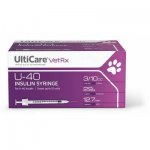PQTaggart
Member Since 2024
Hi, I'm Megan and my cat is Jake. He's (at least) 15 years old and was diagnosed in August 2024. I've been lurking on the site since then, and the information has been wonderful! We have a good routine, Jake's gained back his lost weight and is doing pretty well - thank you all for sharing your knowledge!
My vet isn't very knowledgeable about diabetes, and a "specialist" she consulted didn't agree with at-home testing, so that didn't go well. I've been able to figure a lot out, but we're still having issues with insulin type and doses. We're on 3 units of PZI currently, but can't seem to get his numbers down and stable. The vet thinks 3 units is the maximum for Jake and doesn't want to switch to Lantus.
I have two spreadsheets - the FreeStyle Lite was used August - November, and we started monitoring with AlphaTrak3 in mid-October. I'd love any advice you can give us, thank you!
My vet isn't very knowledgeable about diabetes, and a "specialist" she consulted didn't agree with at-home testing, so that didn't go well. I've been able to figure a lot out, but we're still having issues with insulin type and doses. We're on 3 units of PZI currently, but can't seem to get his numbers down and stable. The vet thinks 3 units is the maximum for Jake and doesn't want to switch to Lantus.
I have two spreadsheets - the FreeStyle Lite was used August - November, and we started monitoring with AlphaTrak3 in mid-October. I'd love any advice you can give us, thank you!



